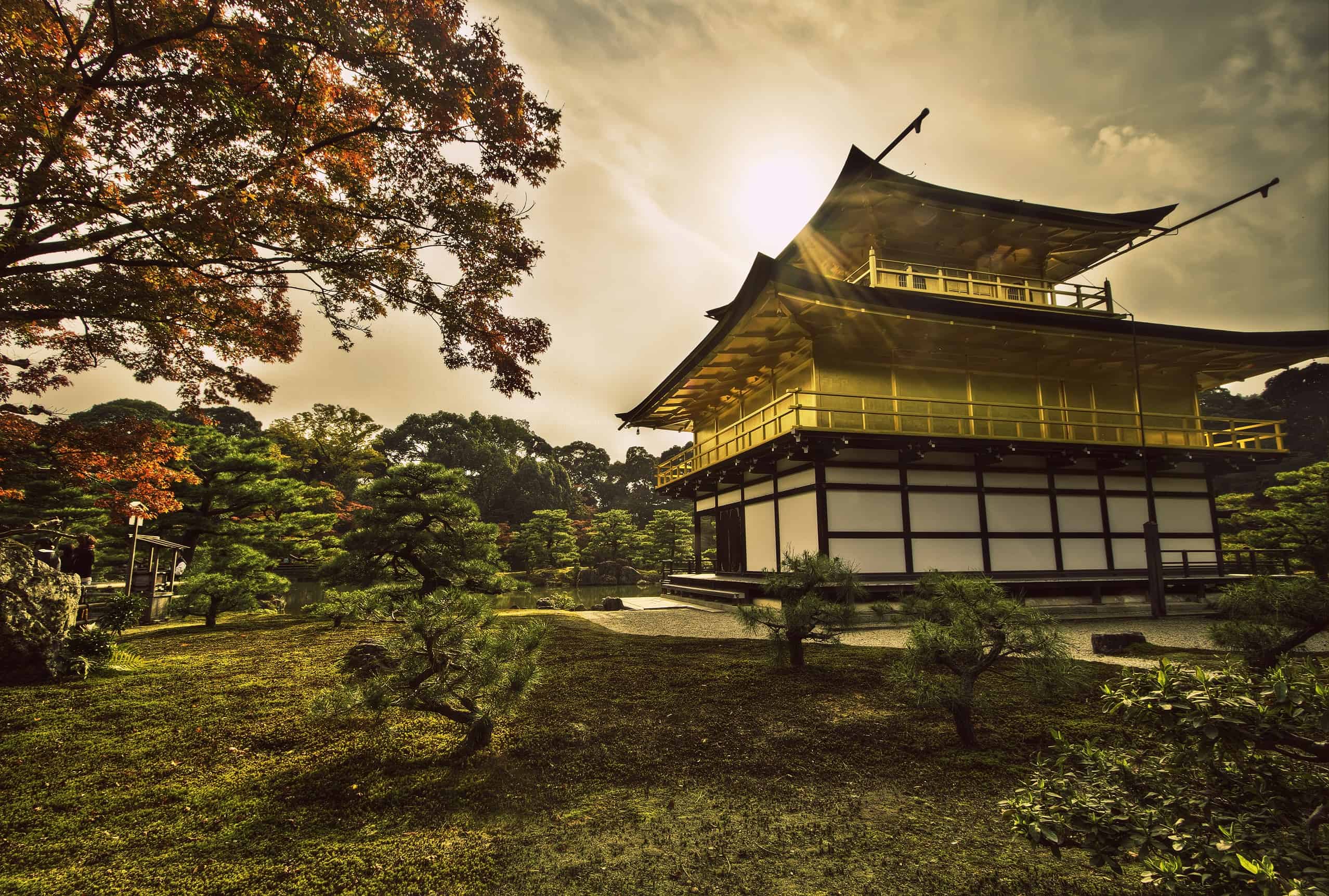In days long past, Kyoto was the capital of the many states of Japan and the seat of their monarch, the Emperor, making it a target for violence and bloodshed among feudal lords. However, those days are gone, the emperor has become a figurehead of a constitutional monarchy and the capital city has been moved to the bustling metropolis of Tokyo. However, the city has remodeled itself as a place of peace, one where visitors can go to escape their hectic lives; a city filled with gardens, museums and historical landmarks. Those looking for a little peace in Japan can find it in these five peaceful places in Kyoto.
The Philosopher's Path
 https://www.flickr.com/photos/camknows/
https://www.flickr.com/photos/camknows/
The Philosopher's Path is a peaceful and pleasant path, perfect for both finding peace and pondering big questions. This path runs along a small canal, both of which connect the equally peaceful temples of Ginkakuji and Nanzenji. What makes the Philosopher's Path more peaceful than either of the temples or their beautiful surrounding gardens? The answer is cherry blossoms. The Philosopher's Path is lined with hundreds of cherry trees. Although the path is peaceful in unique ways throughout the year - like lonesome and barren in winter or lively and green in summer - the path is at its most spectacular in the spring. Come April, Kyoto becomes the land of the cherry blossoms. The cherry trees turn a delicate light pink, adding a cheery brightness to the city, as well as a fragrant smell. When planted close together like on the Philosopher's Path, it provides serenity at its finest. Even in late April and early May when the petals begin to fall and twist in the wind or sail through the canal, it is the perfect place.
Ryoanji Temple
 https://www.flickr.com/photos/bigberto/
https://www.flickr.com/photos/bigberto/
Originally an aristocrat's home in the Heian Period, what is now Ryoanji Temple was converted to a Zen Buddhism temple in 1450 by the Rinzai sect. Today, the temple is home to a famous rock garden. The garden consists of a rectangular plot of uniform pebbles surrounded by earthen walls with big rocks laid out on mossy patches. The Ryoanji Temple rock garden is one of the strangest gardens in the world because it involves so few plants compared to traditional gardens. However, within its simplicity is peace. The temple features proper gardens and a pond as well as simple, tradition furnishings on the interior. The Hojo, or the residence of the head priest, is where visitors can get the most stunning view of the rock gardens. There visitors will truly see the uniformity of the pebbles and edges that gives a sense of calm.
Kinkakuji Golden Pavilion
 https://www.flickr.com/photos/agustinrafaelreyes/
https://www.flickr.com/photos/agustinrafaelreyes/
The Kinkakuji Temple, otherwise known as the Golden Pavilion, is a beautiful Zen Buddhist Temple on the western edge of Kyoto. Historically, it was the retirement villa of shogun Ashikaga Yoshimitsu. Today, the Golden Pavilion is one of the must-visit sites in Kyoto, not only for the natural beauty of the grounds, but because the building itself is gloriously lavish. That golden colour on the exterior of the second two floors is not paint - but real gold leaf. This charmingly lavish temple sits by a still pond surrounded by bonsai trees and other native flora. Standing on the porches on any level of the building, looking out over the pond and the wilderness, it is easy to see why this is such a peaceful place in Kyoto. It is even more obvious why a stressed shogun would choose it as his retirement home.
Fushimi Inari Shrine
 Creativecommons.org/ minoir
Creativecommons.org/ minoir
The peaceful places in Kyoto are not just limited to Zen Buddhism temples, but the Shinto shrines provide equally peaceful experiences in the city. The Fushimi Inari Shrine is easily the most stunning Shinto shrine in Japan. Thousands of vermillion torii gates straddle the trails behind the buildings, leading through peaceful gardens and dense forests at the top of the 233-metre-high sacred Mount Inari. The decor of this shrine is so extravagant because it is dedicated to one of the most important Shinto Gods - Inari, the Shinto God of Rice. Visitors can peacefully stroll the grounds and view the many foxes wandering the mountain. The fox was believed to be Inari's messenger, so the mountain and shrine have become a sanctuary for them.
Kyoto Museum for World Peace
Across from Kyoto's Ritsumeikan University is the Kyoto Museum of World Peace. Like many Japanese institutions, the university aided the government and military shortly before their entrance into World War II in preparation for their invasion. After the war, they built the museum as an act of atonement. The museum traces the 15-year war, starting after Japan attacked and invaded China in 1931, to their surrender shortly after the atomic bombs dropped. Peace seekers in Kyoto will not see peace in their exhibits, but their aim is to inspire peace and nuclear weapon dissolution through them.


